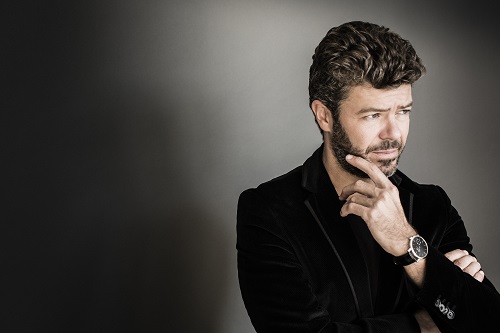 Switzerland Dutilleux, Debussy, Brahms: Camilla Tilling (soprano), Tonhalle Orchestra Zurich / Pablo Heras-Casado (conductor), Tonhalle-Maag Zurich, 7.12.2017 (JR)
Switzerland Dutilleux, Debussy, Brahms: Camilla Tilling (soprano), Tonhalle Orchestra Zurich / Pablo Heras-Casado (conductor), Tonhalle-Maag Zurich, 7.12.2017 (JR)

Dutilleux – Correspondances for soprano and orchestra
Debussy – La mer
Brahms – Symphony No.4 Op.98
Less than a year ago, we were wondering whether Pablo Heras-Casado might be one of the candidates to succeed Lionel Bringuier as Principal Conductor of the Tonhalle Orchestra Zurich: well, he lost that competition to Paavo Järvi, but it is very good to see him return for three consecutive concerts, with an attractive programme.
Dutilleux’s Correspondances, a song-cycle for soprano and orchestra, is a fairly new piece (dating back to 2003) and entirely new to me. The work consists of five movements based on various letters, by Rilke, Mukherjee, Solzhenitsyn and Van Gogh unified by their concern about the place of humanity in the cosmos.
The very short Rilke fragments are used rather like the Promenades in Pictures at an Exhibition, but without the melody. Entitled Gong 1 and Gong 2, unsurprisingly they feature the percussion section. Blink (or cough) and you will have missed them. I thought I would detect Indian influences in Danse cosmique, but I did not – I was simply mystified and the movement left me cold (I suppose the cosmos is supposed to be a cold place). I was not transported to the other side of the Universe but to the Land of Nod.
Woodwinds and brass are prominent in De Vincent à Théo…, echoing the painter’s use of colour while an accordion and strings dominate in A Slava et Galina (that letter was addressed to Rostropovich and his wife, soprano Galina Vishnevskaya, by way of thanks for their support during oppressive Soviet times). This latter section had the greatest impact and was most moving. Although the Swedish soprano had to screech (deliberately, at the end of the van Gogh ‘letter’ to his brother Theo), she managed to combine a crystalline tone and ethereal top notes with volume, supported by clear French diction.
La Mer needs no introduction but to my mind, early on, it received only an everyday interpretation – Bringuier would have brought out more colour from the piece. The first two sections were too languorous for my liking; Debussy started the piece in the vineyards of Burgundy and finished it at the Grand Hotel in Eastbourne – the muddy grey water of the English Channel clearly came into vision rather than the sparkling turquoise waters of the Mediterranean. Only in the final stormy movement did the orchestra awaken; I think, however, it may be a problem with the piece in general rather than with Heras-Casado’s interpretation.
The best was kept to last, Brahms’ Fourth Symphony. Dapper and stylishly attired, Heras-Casado constructed a very well sculpted performance. The melodious woodwind supported him very well throughout; the strings were ardent where required, delicate and together in their lengthy pizzicato episodes. Brass was muscular and on good form. The jaunty third movement was played with especial vitality and enthusiasm and in the final movement, after a spectacular contribution from principal flute Sabine Moyé-Porel, Heras-Casado almost brought out what seemed like Iberian heat in the closing pages.
I have mentioned in previous reviews that Zurich’s classical concerts are being played in a temporary hall for a few years, while their main hall (the Tonhalle) is being renovated. This concert was played when winds outside were particularly blustery. I mention this, not for meteorological reasons, but because the sound of the wind penetrated gaps in the roof and the orchestra, when quiet, had to compete with what sounded like the haunting foghorn from the final part of Peter Grimes when the fisherman goes out to sea for the final time.
John Rhodes